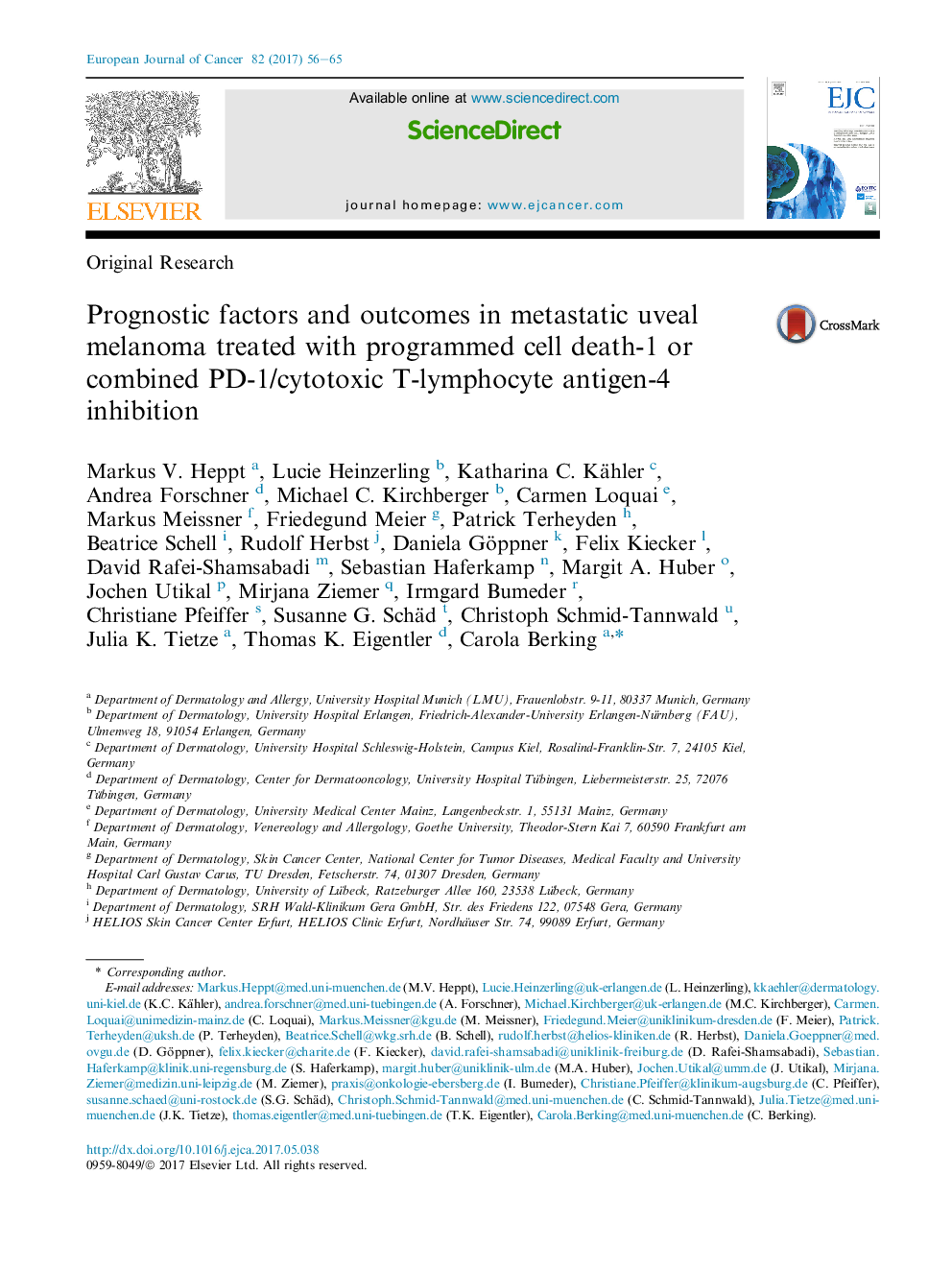| کد مقاله | کد نشریه | سال انتشار | مقاله انگلیسی | نسخه تمام متن |
|---|---|---|---|---|
| 5526434 | 1547050 | 2017 | 10 صفحه PDF | دانلود رایگان |

- Ninety-six patients with uveal melanoma treated with checkpoint blockade are reported.
- This is the first report on combined programmed cell death 1 (PD-1) with cytotoxic T-lymphocyte antigen-4 (CTLA-4) inhibition in uveal melanoma.
- Serum lactate dehydrogenase (LDH), C-reactive protein (CRP) and relative eosinophil count (REC) were prognostic factors for survival.
- Blood markers predict survival in UM treated with checkpoint blockade.
BackgroundUveal melanoma (UM) is an ocular malignancy with high potential for metastatic spread. In contrast to cutaneous melanoma, immunotherapy has not yet shown convincing efficacy in patients with UM. Combined immune checkpoint blockade with checkpoint programmed cell death-1 (PD-1) and checkpoint cytotoxic T-lymphocyte antigen-4 (CTLA-4) inhibition has not been systematically assessed for UM to date.Patients and methodsPatients with metastatic UM treated with either PD-1 inhibitor monotherapy or combined PD-1 inhibitor and ipilimumab (an anti-CTLA-4 monoclonal antibody) were included from 20 German skin cancer centres. Records from 96 cases were analysed for treatment outcomes. Clinical and blood parameters associated with overall survival (OS) or treatment response were identified with multivariate Cox regression and binary logistic regression.ResultsEighty-six patients were treated with PD-1 inhibitors only (n = 54 for pembrolizumab, n = 32 for nivolumab) with a centrally confirmed response rate of 4.7%. Median OS was 14 months for pembrolizumab-treated and 10 months for nivolumab-treated patients (p = 0.765). Fifteen patients were treated with combined immune checkpoint blockade with partial response observed in two cases. Median OS was not reached in this group. Multivariate Cox regression identified Eastern Cooperative Oncology Group (ECOG) performance status (p = 0.002), elevated serum levels of lactate dehydrogenase (LDH) (p = 0.002) and C-reactive protein (CRP) (p = 0.001), and a relative eosinophil count (REC) <1.5% (p = 0.002) as independent risk factors for poor survival. Patients with elevated CRP and LDH and a REC <1.5% were at highest risk for disease progression and death (p = 0.001).ConclusionsBlood markers predict survival in metastatic UM treated with immune checkpoint blockade. Normal serum levels of LDH and CRP and a high REC may help identify patients with better prognosis.
Journal: European Journal of Cancer - Volume 82, September 2017, Pages 56-65